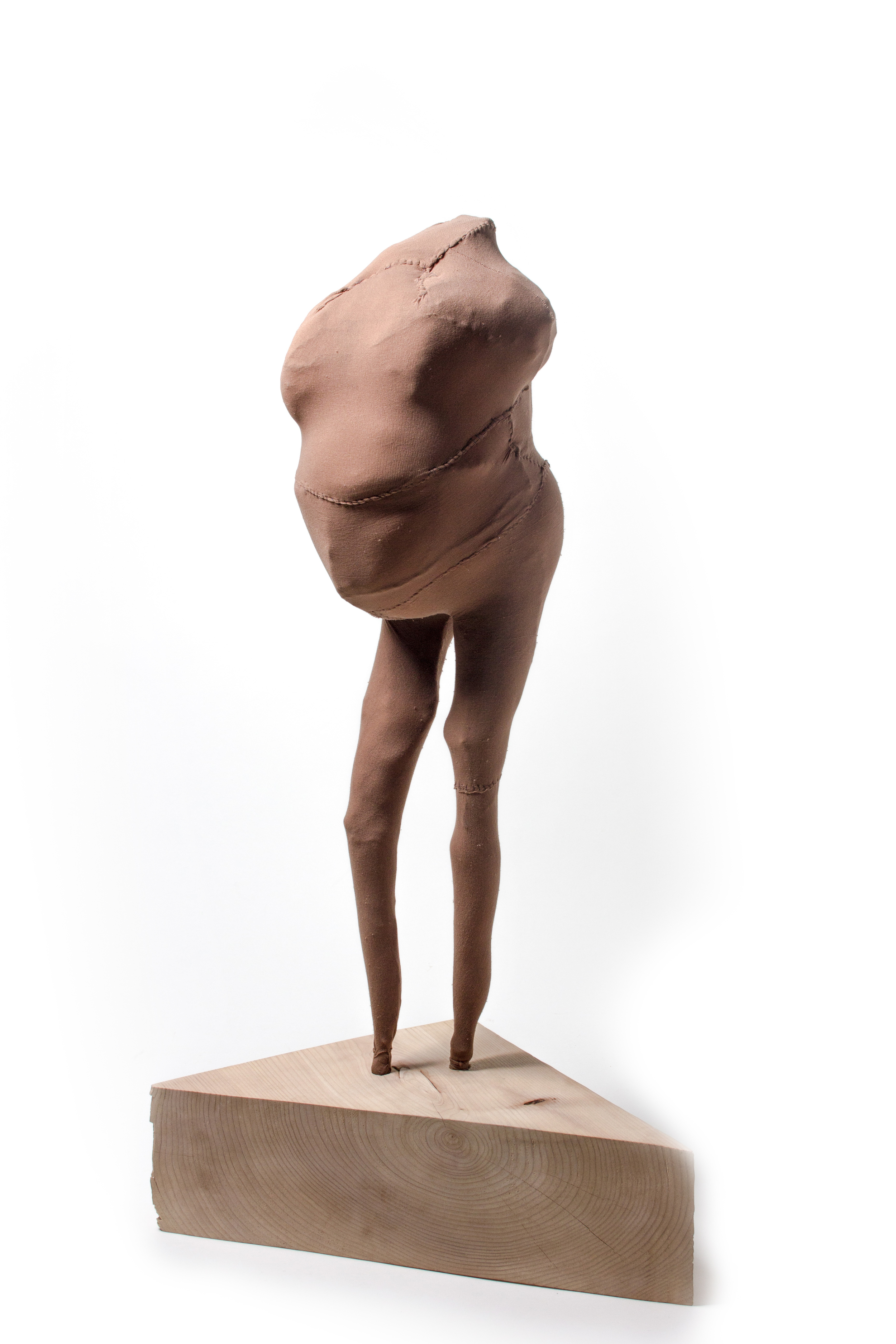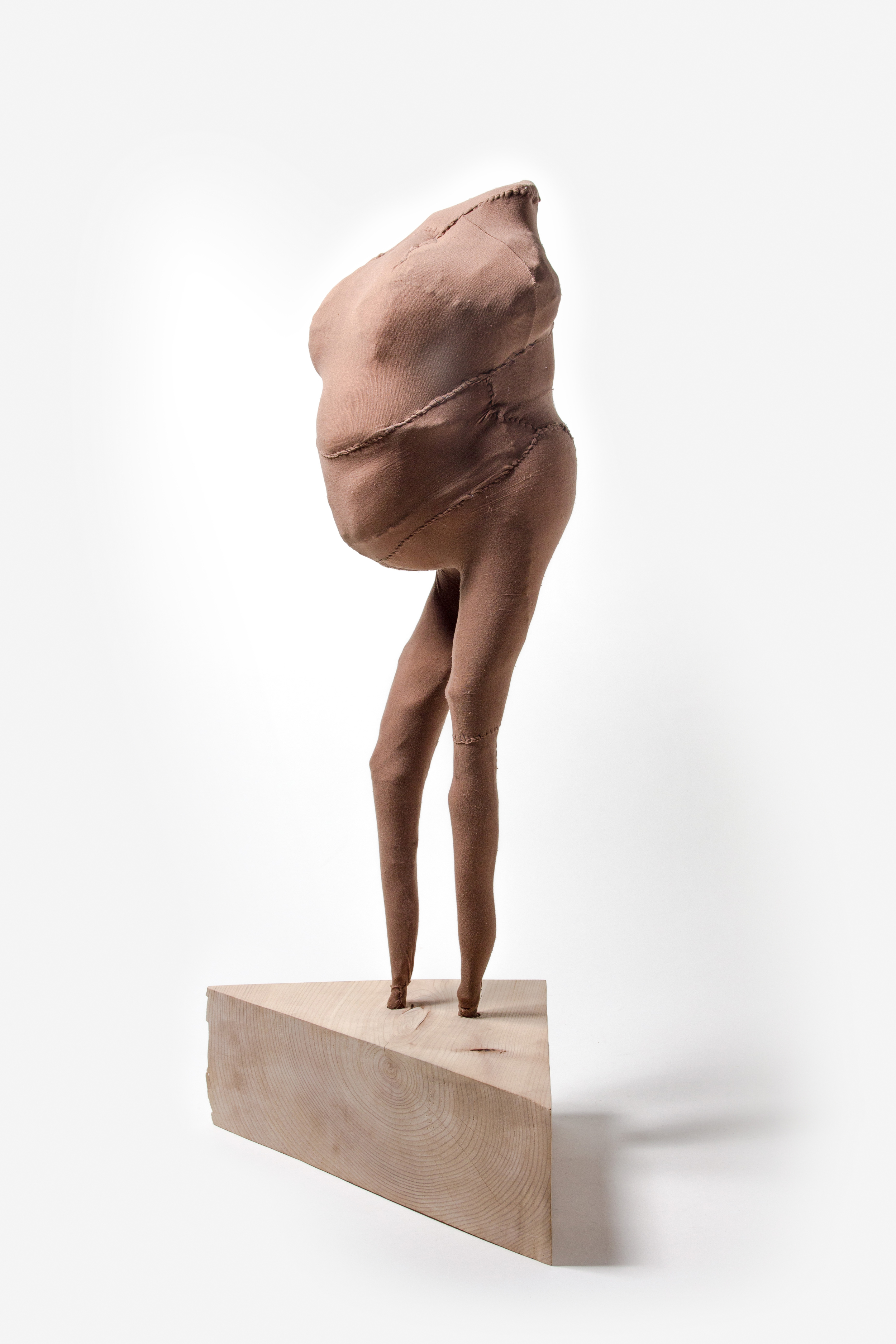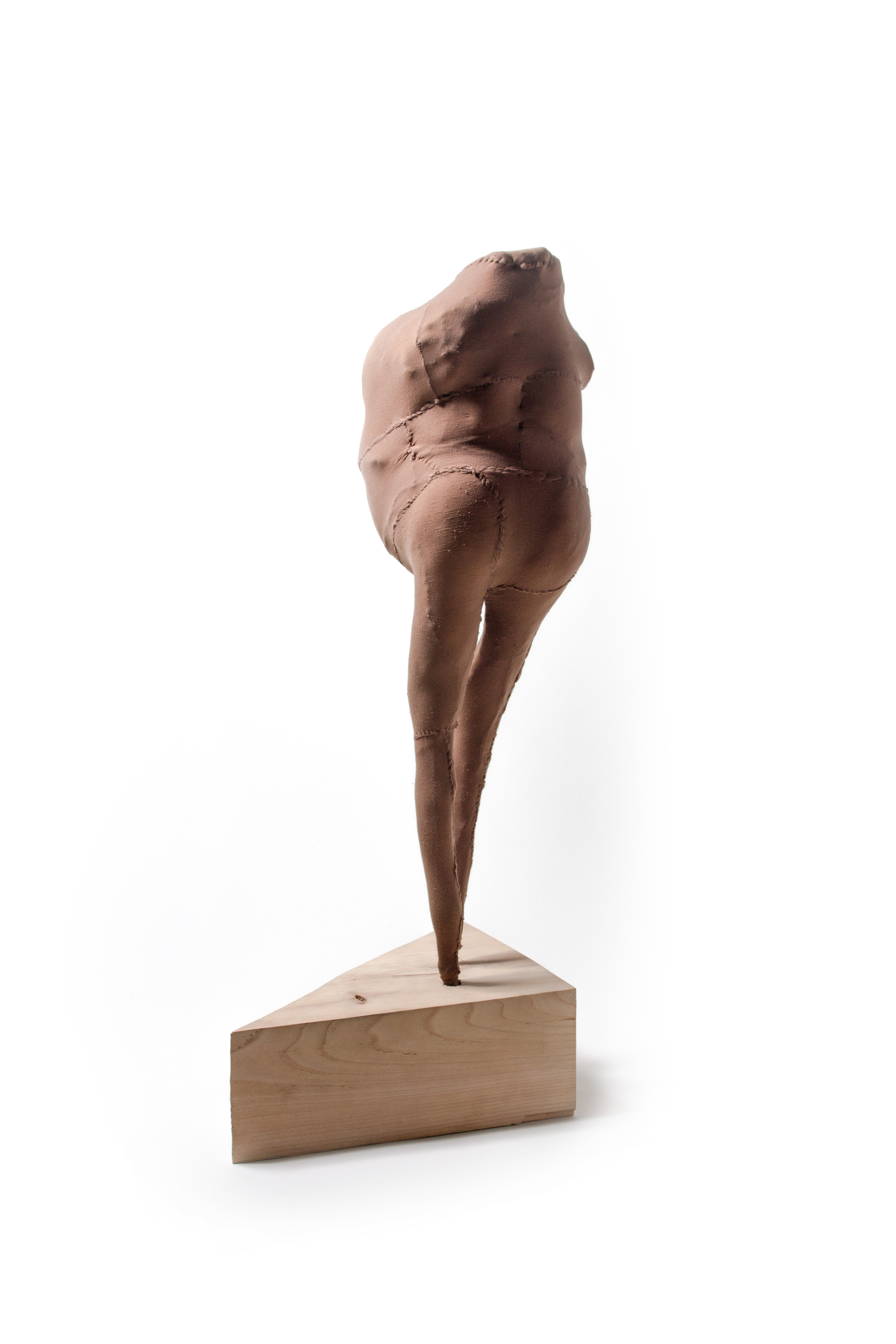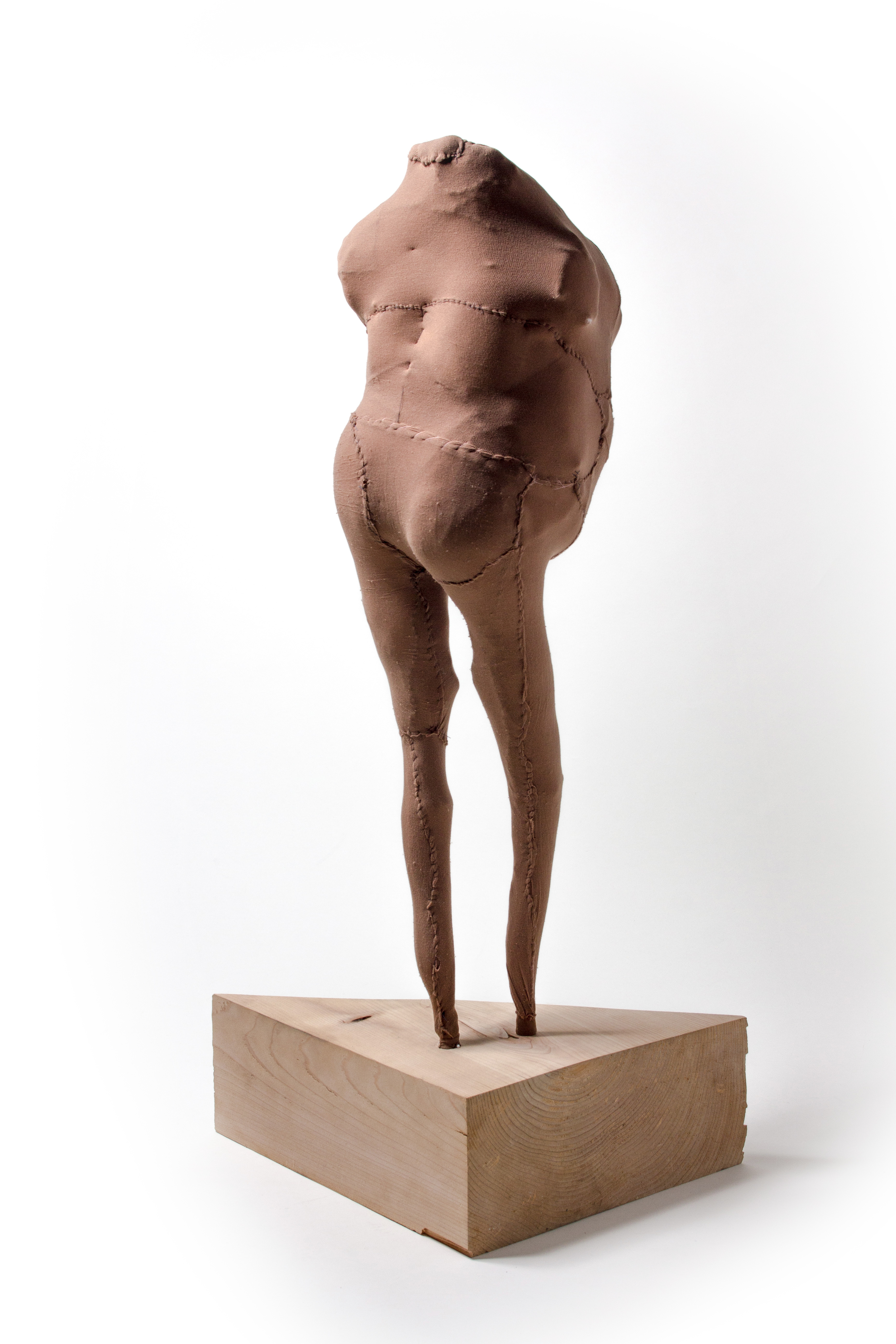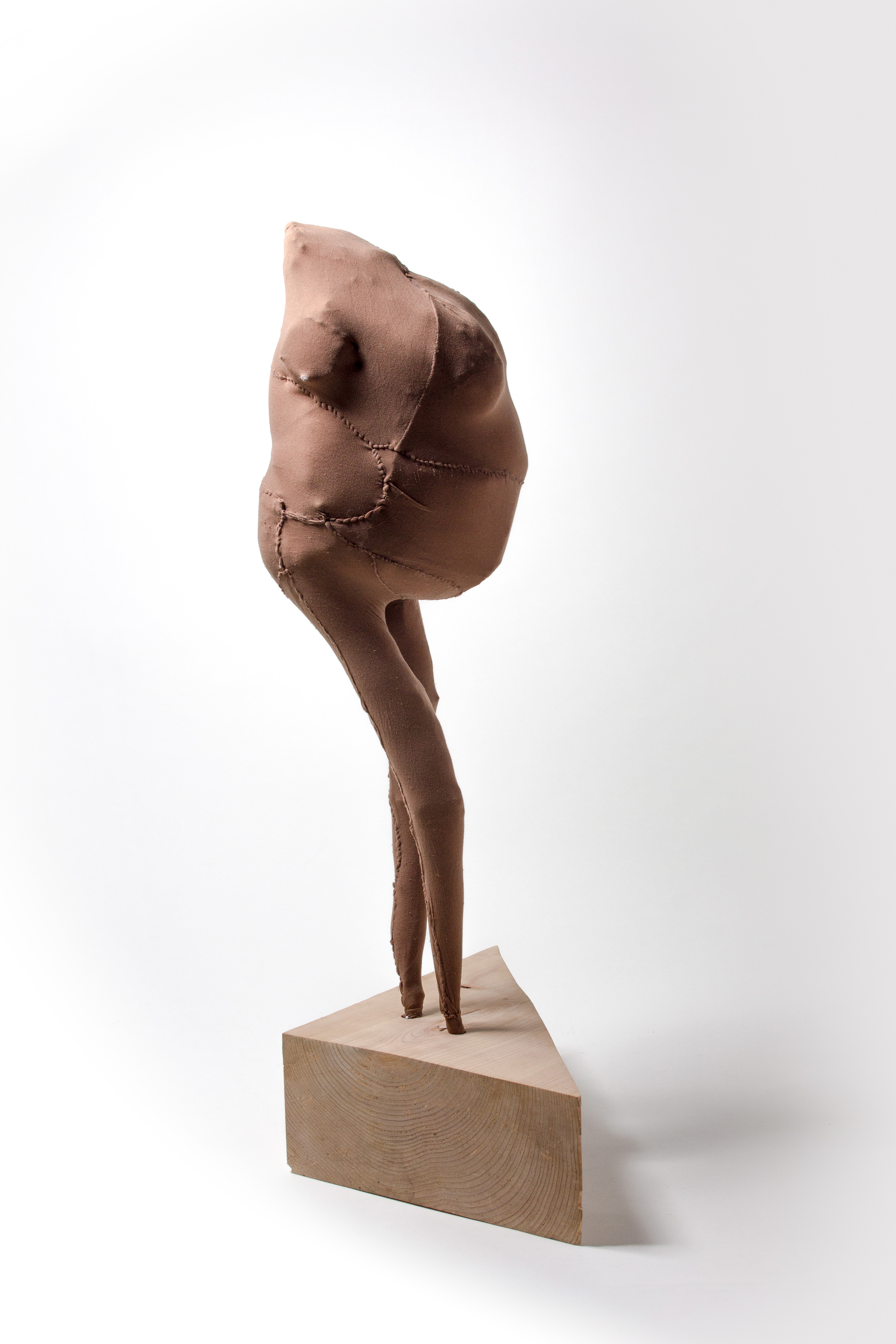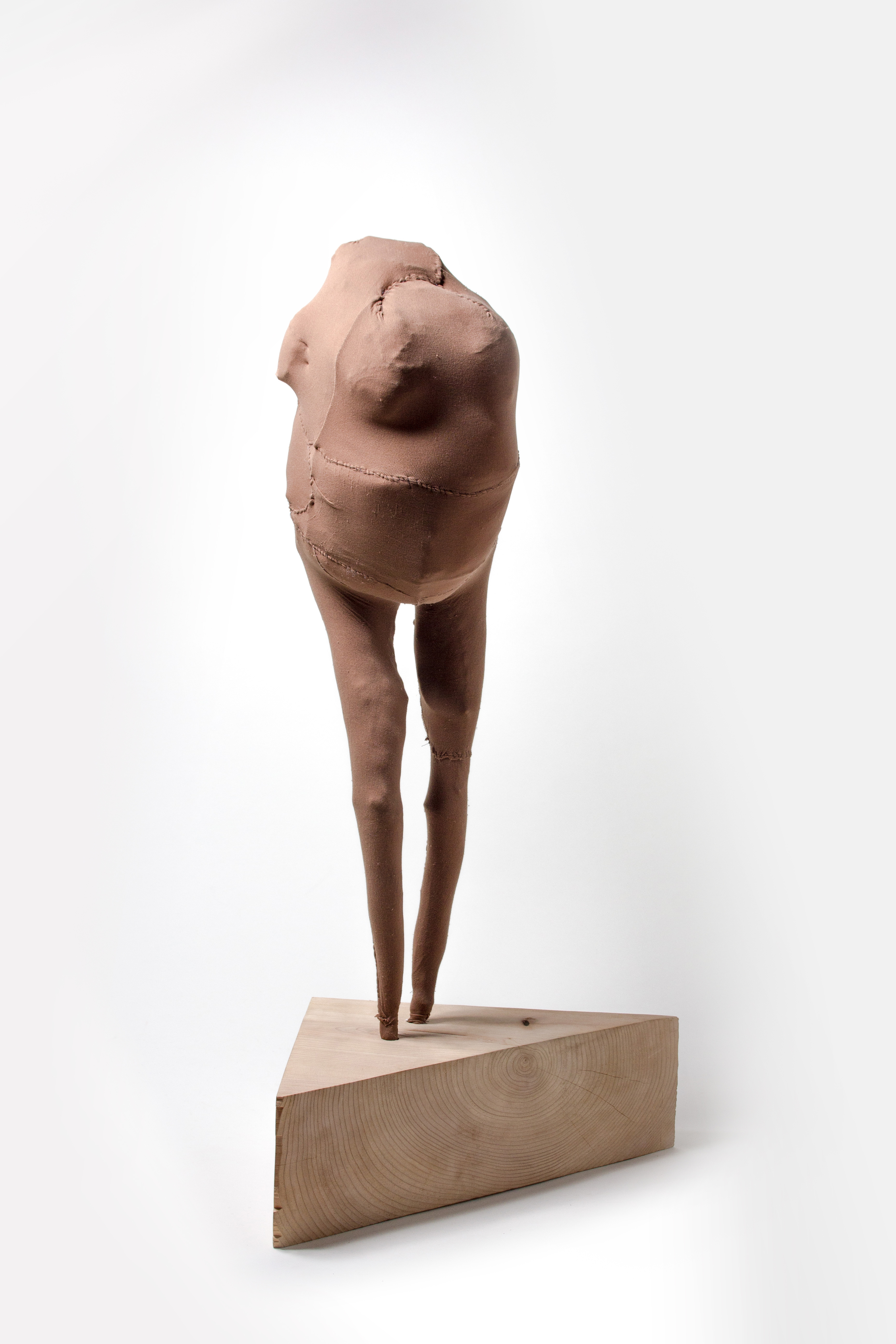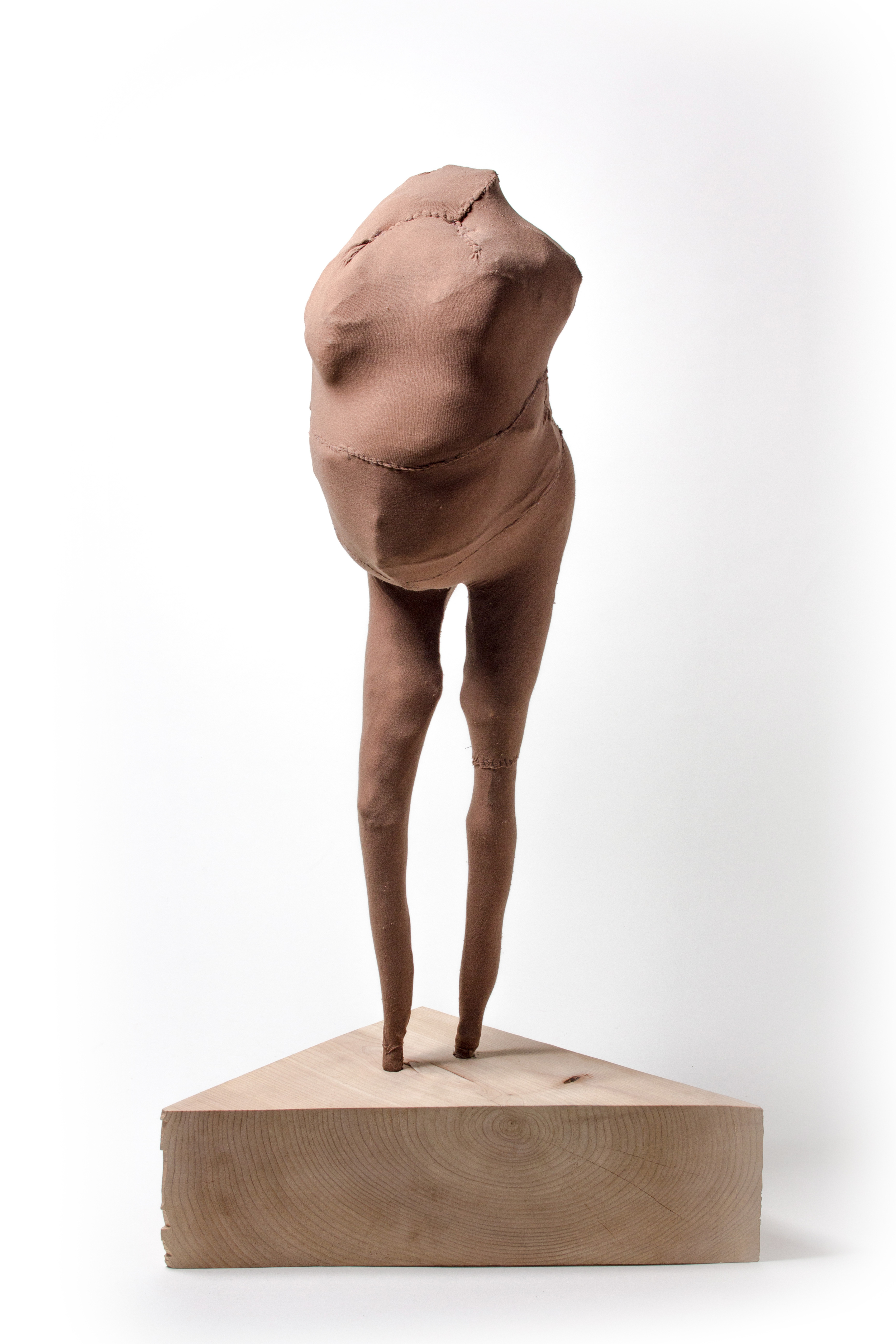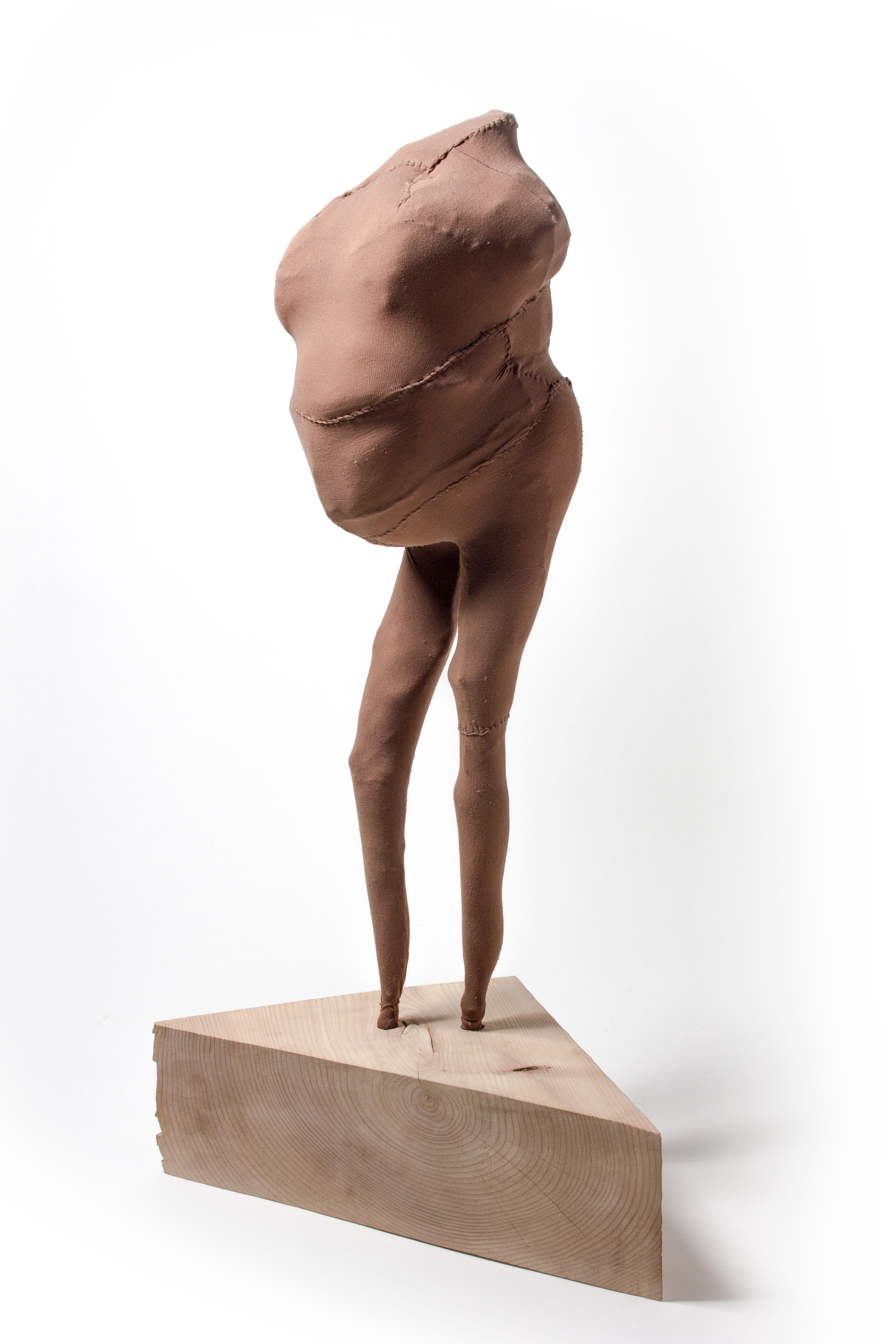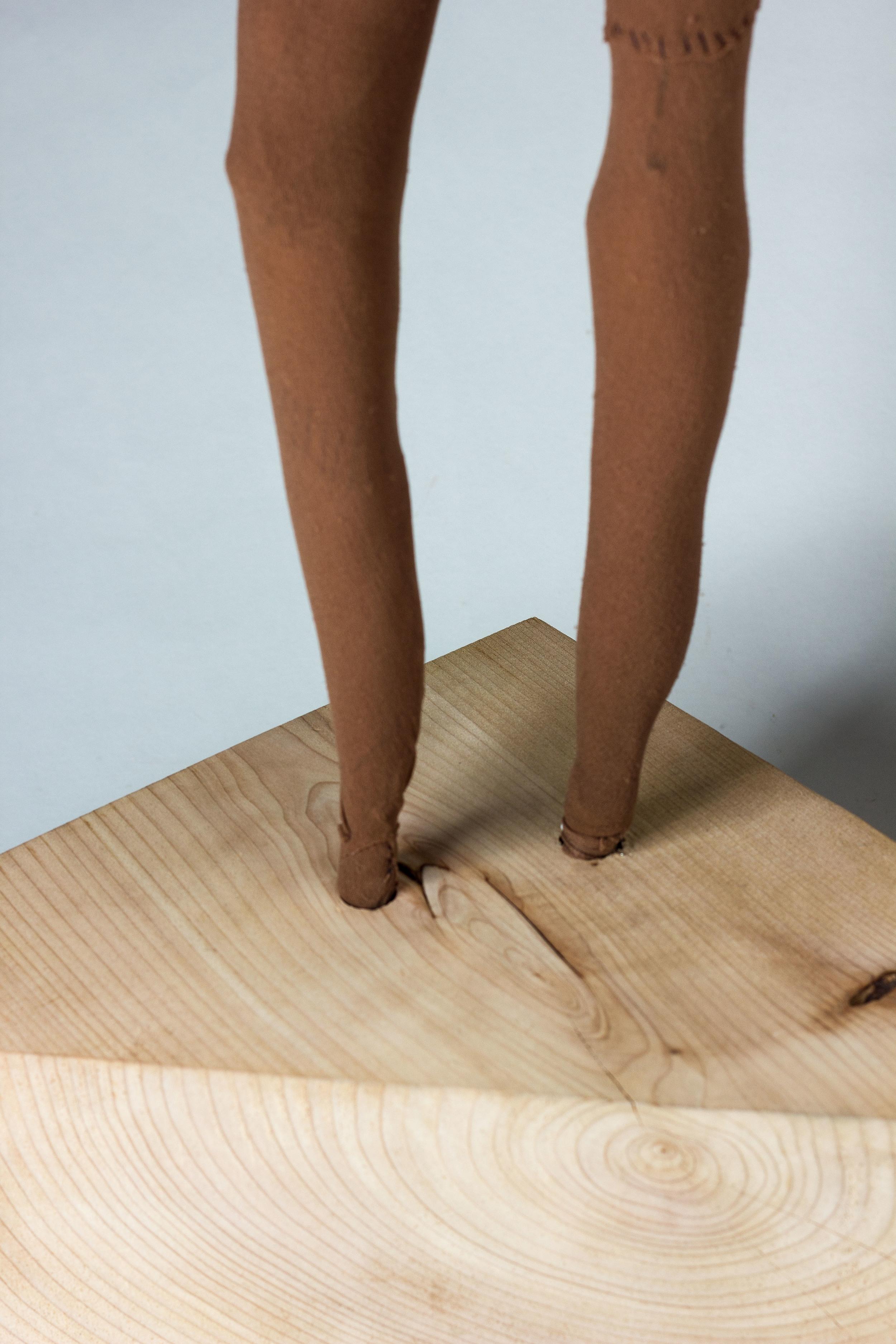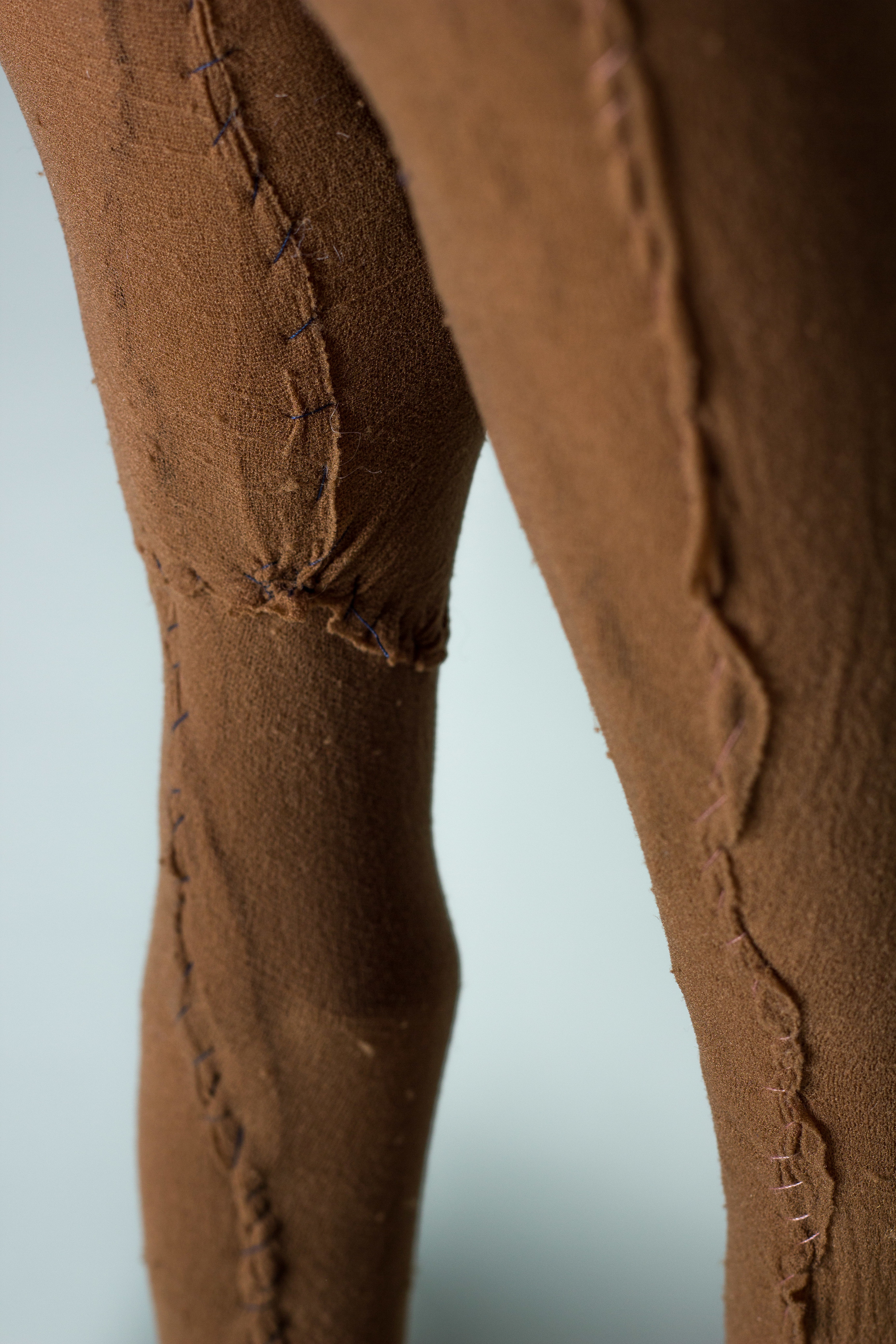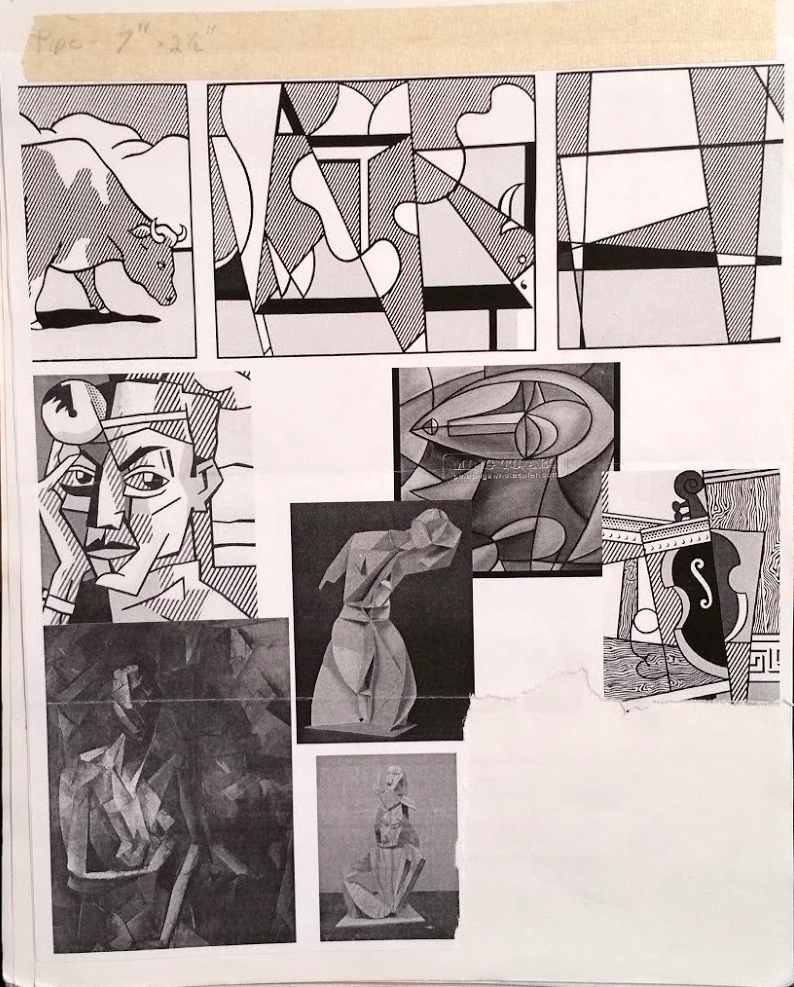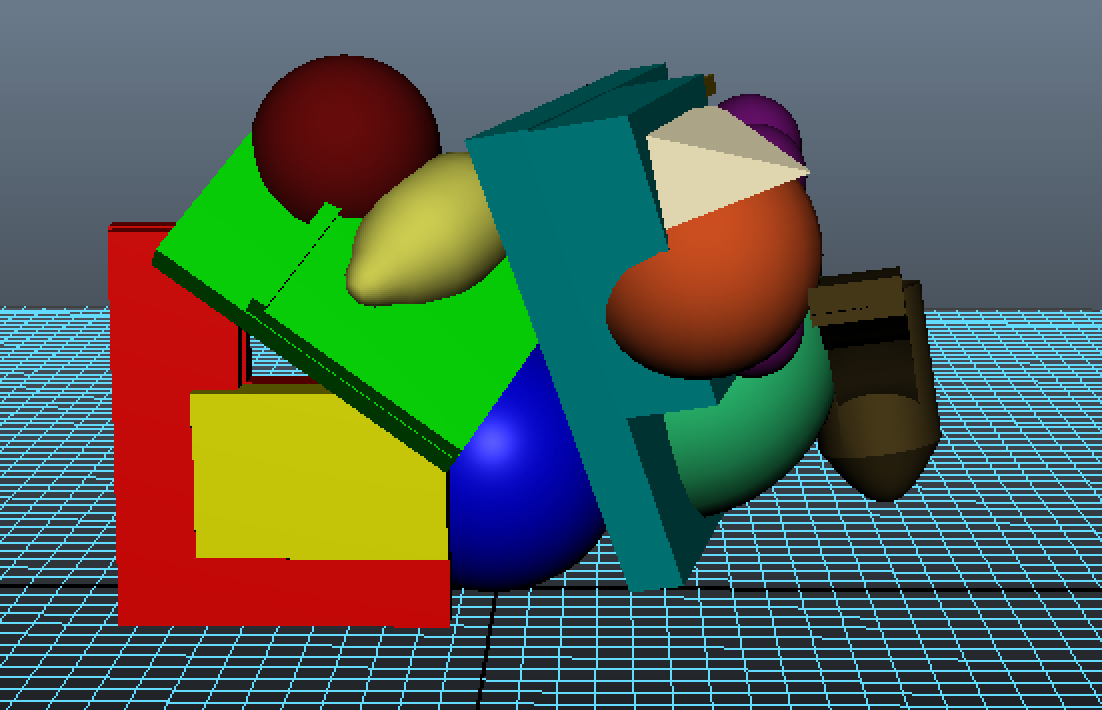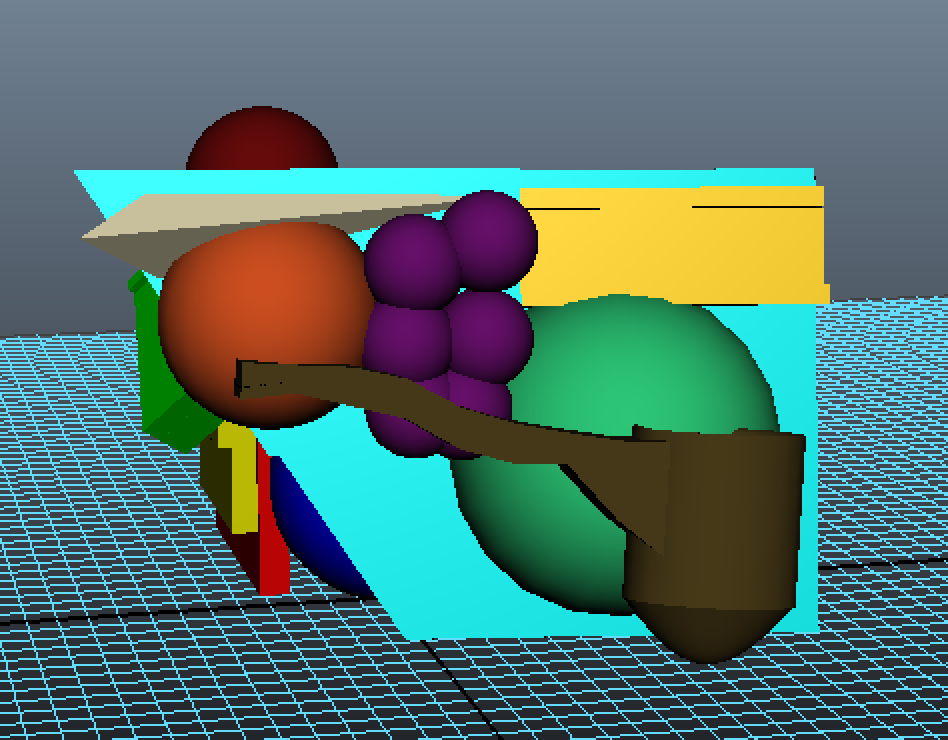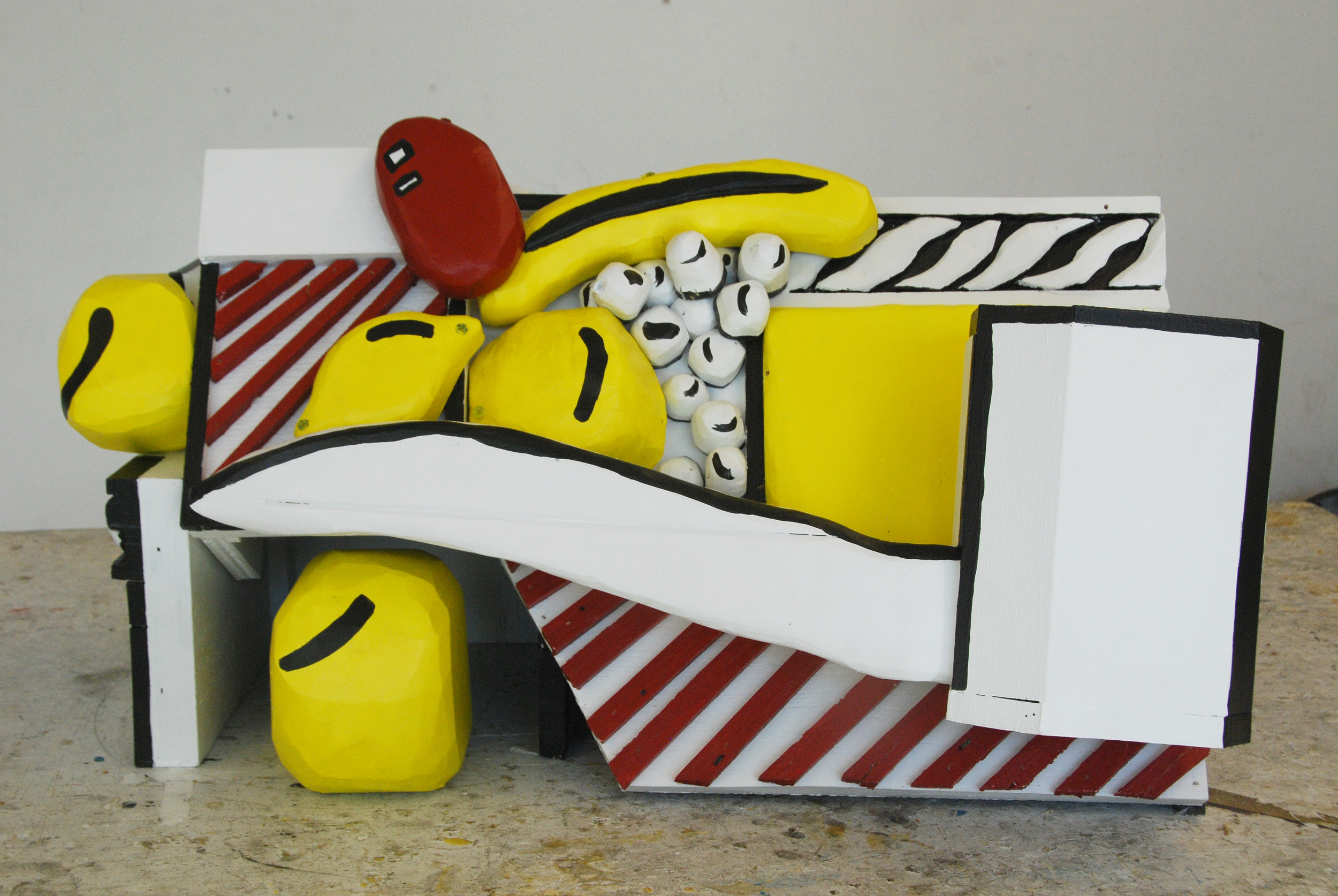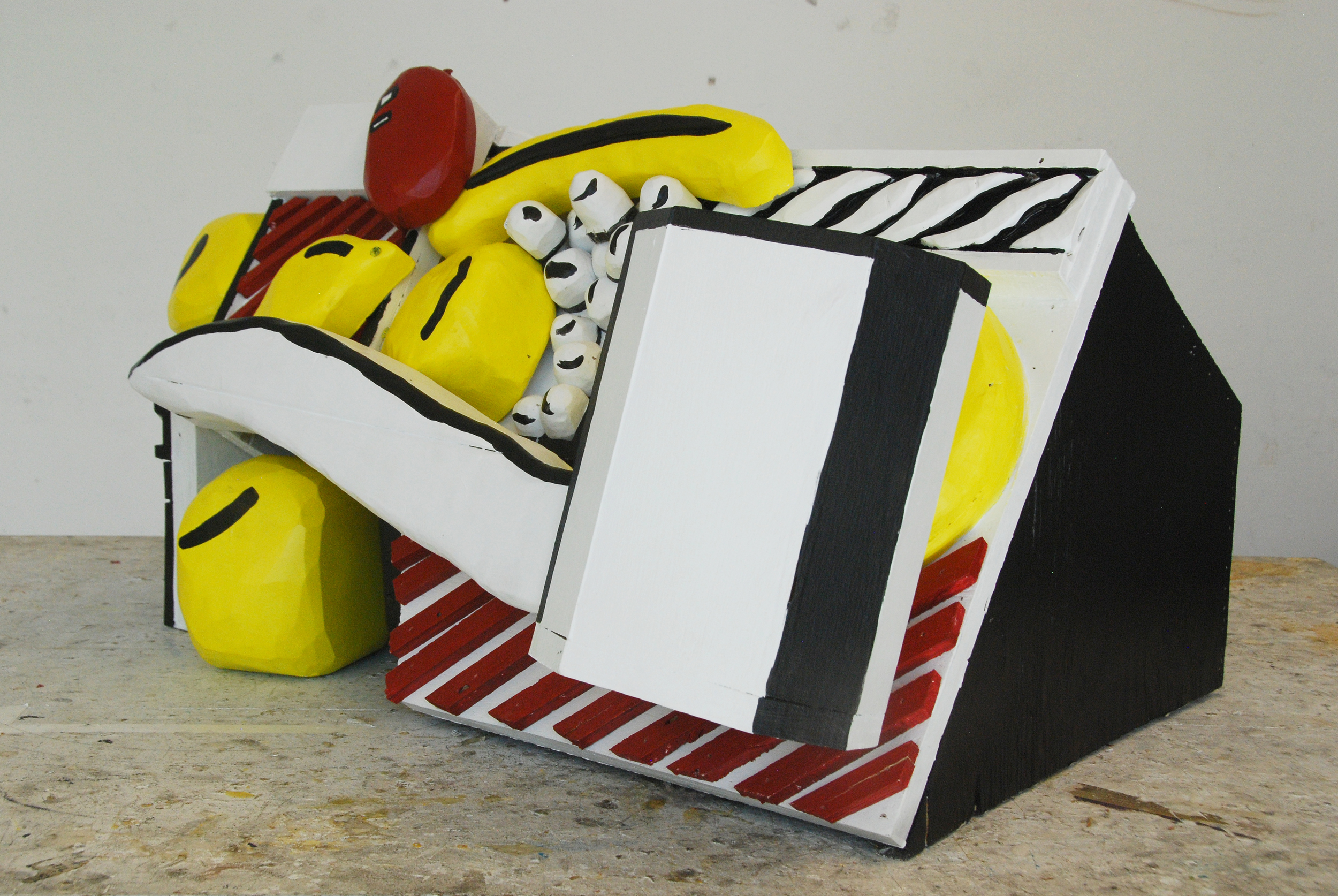The Project
For the final project in 3D sculpture, we were asked to research an artist, find a piece, and write a description. Then the professor would take the description and give them out to other students. With just the description, you would have to envision what the sculpture looked like and make it.
My description was as follows:
Feminine pregnant body. Plush. Rough texture. Anonymity. Armless. Lifeless. Juxtapose. Sharp Spider legs protruding. Smooth. Jointed. Sharp contrast to body. Quirky. Female Spirit. Visceral.
The Idea & Planning
With this in mind I sketched out my idea. I envisioned a pregnant woman with no arms or head with a spider legs without feet. To make the statue, I would use panty-hoes and cover the body with that to give it a plush living look. This idea was suggested to me by another student in my class that remembered works by Rosa Verloop.
In order to fabricate the whole sculpture, I would have to create a wire frame, then cover that with panty-hoes. Then pin the panty-hoes to the frame to give it contour. After that I would hot glue stuffing to the body to give it some muscle and size, so it wouldn't have wire show through. Then I would have two more layers of Panty-hoes and sew the seams together to make the final piece. Below are some photos of the making process.
A piece done by Rosa Verloop
During the research I found a sculpture that resembled my vision.
Sketches of my idea
In Progress
Finished
Details
This is the actual sculpture the description was based off of.
Sculpture by Louise Bourgeois.








